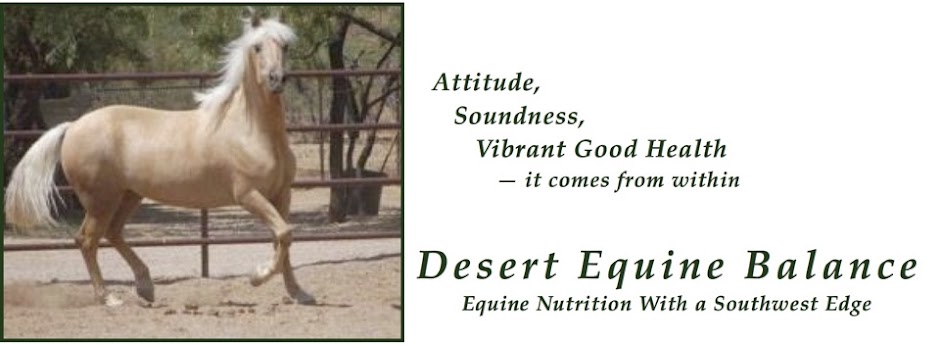Website update - I've added Sally Hugg's California Trace supplement to the SW Regional Custom supplements article on my website so you can now compare it to the three "Arizona" supplements I developed - AZ Regional Mix, AZ First Balance and AZ Copper Complete - manufactured and sold by HorseTech).
- What levels of minerals and vitamins does it contain?
- What is the "base"?
- How much do I need to feed?
- Do I really need all the ingredients in the complete supplement or do I only need the basics?
- Do I need to add a lot of extras to the supplement?
- Do I want to pay for the convenience of having the "extras" included?
As you can tell by comparing the cost, analyses and suggested "add-ins" of these supplements, there is a wide spread between the "basic" supplements and the more complete mixes. While it may be easier to simply buy the product with the most ingredients hoping to cover everything, I try to discourage horse owners from spending money on nutrients they don't need. Sally's California Trace is perfect for a horse on quality pasture providing good levels of Omega-3 fatty acids and Vitamin E, or the owner who wants to purchase and grind their own flax seed. The more intense support of AZ Copper Complete might be the choice for the horse which never sees a blade of grass, whose hay quality is highly variable or the owner with little extra time available for "tweaking" their supplement.
The ideal is, of course, analyzing your hay (and pasture) to ensure you're meeting your horse's requirements and to give you a basis for filling in the gaps (or balancing excesses). But when that is not possible, take the time to choose your supplement wisely, spending on the nutrients that will count for your horse.
Best regards,
Patti
Desert Hoofprints in very warm Vail AZ (99 F - don't forget the salt!)
Links -
SW Regional Supplements http://www.desertequinebalance.com/Files/regional-supplements
California Trace http://www.californiatrace.com/
HorseTech http://www.horsetech.com/



